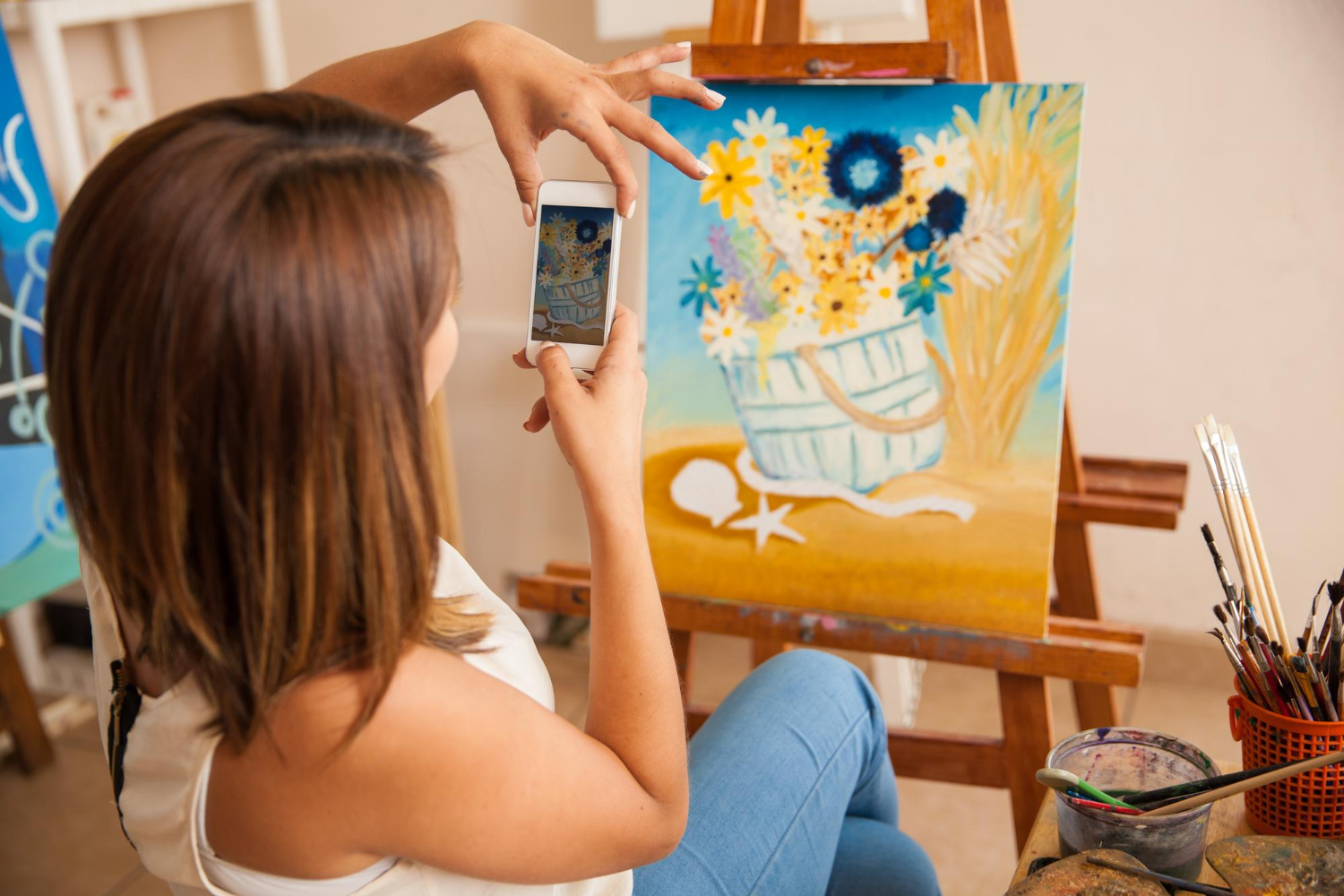You have to be the change to bring the change.

3 Mistakes Artists Make When Selling Art Online
Our content is reader-supported. We may earn a commission if you make a purchase through one of our links.
There are so many ways to sell and market your art online, such as joining an online art gallery as they are tailored to the needs of artists and only sell art. As such, it’s much easier for potential buyers to find you than on a non-art-specific page. But what mistakes can stop you when you’re selling your art and trying to reach the top in an online art gallery?
1. Taking Blurry or Bad Pictures
Our experience shows us that artworks with high-quality images sell better. In fact, high-quality pictures are an absolute necessity. Nothing tells potential buyers that you don’t care about selling your art quite like blurry pictures.
When taking the picture, also make sure all of your artwork is evenly in the frame and properly lit. Further, unnecessary decoration or colorful walls may drown out your painting, so place your work in front of a white wall.
The best practice is to just show your painting as the first picture and let it speak for itself. But of course, you can have more than one picture of your artwork. For the second and third pictures, we either recommend close-ups or shots of the work on a wall. Depending on which you chose, do the other one afterward. Also, show the frame (if it has one), the sides, the corners, and simply as much of the artwork as possible.
Never forget that when selling art online, these pictures are the only impression a potential buyer gets of the artwork before deciding whether to buy it or not. By taking sub-par pictures, you are actively harming your chances of selling your art.
Collectors make these decisions, often not about inconsequential amounts of money, solely based on your presentation in the online art gallery. Please keep that in mind. So use all the opportunities given to you. Add as many pictures as you can and show the artwork in as many ways as you can. Give potential buyers the best possible idea of your artwork.
2. Not Writing a Biography
In most cases, collectors don’t only buy artwork because they like how it looks but also because they feel connected to the ideas and the artist behind them. Art is, by definition, emotional and expressive. You are probably not creating art simply because you are amazing at it and earn a lot of money this way.
Rather, you have an innate desire to create and share a part of yourself. Allow your audience to access this part of you by writing about it, whether that be in a biography, an artist’s statement, or an artwork description.
So, don’t waste this potential. Connect with your audience. Talk about yourself, your art, and where your inspiration comes from. Make your art and yourself accessible to your audience.
Explain where you learned how to create, where you create, why you create, what inspires you, your preferred art medium, what materials you use, if you use any unique art tools, what your style is, and all the things that are important to you. Writing a few words isn’t a large time investment, and it signals to potential collectors that you are putting effort into selling your art and taking it seriously.
While creating art is a more relaxed business in terms of professionalism, selling it is not necessarily. You are now venturing into the world of business where other rules apply. Think about how professional you want to be or perhaps how professional you think you should be. Art, in general, is rather expensive, and as such, a potential buyer wants to be sure that their money is well invested.
Overall, when selling, it’s important to consider the buyer’s perspective. Put yourself in the buyer’s shoes. What would you need to see and know before buying art for the price you set? Answer that question for yourself, and then add all the necessary information.
You are expecting collectors to buy your artwork, often at a not-insignificant price, so show them that you care and that you considered their perspective. Never take it for granted that somebody will buy your art, just because it’s great. Making great art is one thing; presenting it such that greatness comes through is another thing
3. Being Lazy
Too many artists think once they upload their art and maybe fill out their biography, they can lean back and wait for collectors to come through their door to buy their art. Unfortunately, in most cases, it’s not that easy. It’s always beneficial to you if you put in the work and promote your art on social media as well.
Success will not just come to you, no matter how amazing your art is. Many talented artists don’t fulfill their vast potential because they don’t make use of all their options.
We understand that you are an artist first and a seller second. But sadly, this is not a sustainable status quo. If you want to be successful, you will have to learn how to present yourself and how to sell. Just creating art is, sadly, insufficient. You also have to sell it. So keep that in mind and consider the buyer’s perspective once in a while.
Additionally, your account must be up to date. Make sure to log into your art gallery account, if you have one, every once in a while, and be active. Upload new art, write blog posts, and show the creation process of your new painting. Being active always increases your chances of being ranked higher, so more potential customers can find you.



